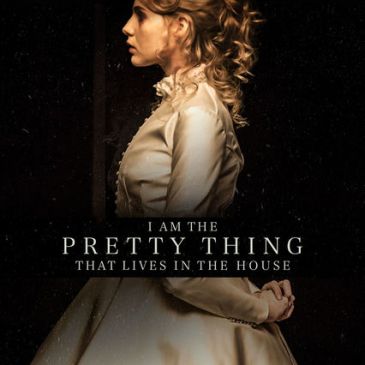Director Osgood Perkins’ The Blackcoat’s Daughter was one of my favorite horror movies of the past couple years: an extremely quiet, extremely tense little maybe-supernatural horror movie with an almost all-female cast. Thematically and artistically it seemed to end up standing in the shadow of The Witch (far and away the horror movie of the last, oh, five years at least, for me): I watched them within a month or so of each other, and Blackcoat immediately appealed to me as being the The Witch‘s little sister. They share the theme of female alienation being answered by the supernatural, and they share, shall we say, manifestations. But Blackcoat is smaller, sparer, and in a way, weirder and more personal-feeling, even if it does employ a few more conventional horror tropes. (I think it’s difficult for The Witch to feel as immediately personal – despite the fact that it’s a deeply humane narrative – due to the distancing effect of its historical setting.)
Lo, did I lose my shit when the existence of Perkins’ I Am the Pretty Thing that Lives in the House, a Netflix original movie, was brought to my attention. (Thank you, S.) First of all, THAT TITLE. Secondly, its trailer suggested, again, an extremely quiet, slow, weird film with a predominantly female cast. Yes.
The outlines of the plot are as follows: a present-day hospice nurse, Lily, arrives at the beautiful, historic Massachusetts house of an elderly horror novelist, Iris Blum. Prim, nervous Lily is lonely and scares easily; Iris has dementia and only addresses Lily as “Polly,” when she is responsive. From day one, Lily is troubled by small disturbances: knocking sounds, disarranged objects. As her months with Iris pass, it’s eventually suggested that one of Iris’ novels, The Woman in the Walls, was narrated to her personally – by the ghost of Polly, the 19th-century bride for whom the house was constructed, and who disappeared on her wedding day.
All of these conventional Gothic elements are conveyed, stylistically and structurally, in ways that push hard against conventionality, and are used in the service of exploring a rich interweaving of themes: isolation, time as nonlinear, the inevitability of death, and communal experience of female trauma.
The movie has a looping, drifting, intensely hushed aesthetic; elliptical is an easy word for it. Lily narrates from the beginning, for example, with unsettling authority, that “I am twenty-eight years old; I will never be twenty-nine.” In other words, this is a ghost story within a ghost story, the story of a second death nested within a first.
Continue reading I Am the Pretty Thing that Lives in the House (2016)

